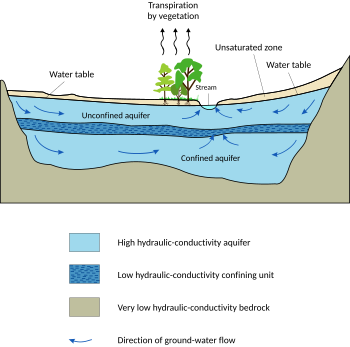http://www.livinghistoryfarm.org/farminginthe70s/pests_05.html
Atrazine is one of the most widely used and most controversial herbicides in the world. Farmers, lawn care workers and gardeners use atrazine both to prevent broadleaf weeds from establishing before they emerge from the ground and to kill weeds that have emerged. The chemical is cheap and, because it's a pre-emergence herbicide, it prevents weeds from competing with crops from the beginning of the growing season. It's estimated that atrazine can increase crop yields by up to six percent. Atrazine has also been used in conservation tillage systems to control weeds and reduce soil erosion.
As late as 2002, it was estimated that atrazine was the most commonly used herbicide in the world with applications in 80 countries. But studies around that time showed that atrazine was dissolving into water in the fields and was showing up in streams and underground drinking water supplies all over the world.
The European Union banned all use of atrazine in 2004 because of persistent groundwater contamination.
In other areas, atrazine use continued – at least, until the later years of the 2000s. In 2005, Nebraska farmers applied atrazine to 77 percent of the corn acres in the state. That's the most recent reporting year on file at the Lincoln office of the National Agricultural Statistics Service.
During this same time period, genetically modified organism (GMO) crops have taken over across the American Midwest. According to the USDA, by 2008, 92 percent of the soybeans planted in the U.S. were GMO varieties. Nebraska and South Dakota were the two highest percentage states at 97 percent each. Genetically modified corn was planted in 80 percent of the fields in the U.S. by 2008. Again, sophisticated farmers in the Midwest led the way. Nebraska farmers planted 86 percent GMO corn while South Dakota topped the list of states at 95 percent GMO corn.
The use of GMO crops – particularly RoundUp Ready varieties – may mean that farmers are transitioning from atrazine to Roundup as their primary defense against weeds.
The other pressure against atrazine is that scientific studies are suggesting that the chemical may be dangerous to humans and other species, especially in the area of reproductive health.
In 2003, there were six studies that showed that frogs exposed to atrazine from nearby farm fields were developing sexual abnormalities. Some species developed multiple testes and multiple ovaries. Males in other studies became hermaphrodites.
The Environmental Protection Agency during the Bush administration took note of the studies, weighed them against other studies and declared the herbicide safe for use. But it did require the manufacturer, the Swiss company Syngenta, to monitor water wells in several areas of the country. Those results showed that overall levels of atrazine were low, but in several wells in corn country levels of atrazine spiked during the spring and summer.
Some local officials are aware of the spikes. For instance, water officials in Lincoln, Nebraska, routinely shut down the wells drawing water into the city's water supply reservoirs every spring when they know farmers are applying atrazine.
In other parts of the country, local officials have not been notified of the spikes in atrazine levels.
After the frog studies raised the issue, other researchers began looking at atrazine and its effects on humans. Epidemiological and animal studies in 2009 suggested that high levels of atrazine during specific periods of pregnancy could result in more birth defects, more low birth weight babies, menstrual problems and even possible susceptibility to cancer for humans later in life.
So, in 2009, the EPA – under a new administration – decided to conduct a new review of the latest scientific data on the herbicide.
Agronomy professor Alex Martin says atrazine works against broadleaf weeds without killing corn because corn has a natural immunity without genetic modification. "In contrast to 2, 4-D, the reason that Atrazine doesn't kill a corn plant is not anything to do with the structure of the corn plant," he says. "But it's the fact that the corn plant has a biochemical pathway that allows it to detoxify atrazine extremely rapidly."
In addition, atrazine can be broken down in the environment by microorganisms, but that process can take time. In the meantime, the chemical can wash into streams and aquifers.
Written by Bill Ganzel, the Ganzel Group. First published in 2009. A partial bibliography of sources is here.
How Insecticides Work
Yet, dropping water tables and disputes with other states has led Nebraska close to the point of outlawing any additional irrigation wells and paying other farmers not to turn on their existing wells.
Heather Derr (left) thinks that despite how much water farmers use, they are getting a bad rap. "I think farmers as a whole do an excellent job of conserving," she says. "Foot for foot, I'll bet [urban] lawns are watered much more than our crops are watered. And yet, we get the blame for lowering the water table."
In this section, we'll consider why researchers have concluded that global warming will change weather patterns, how environmental concerns are constricting irrigation practices and how the competing needs of food production, human use, recreation and the environment will sort out water use in the 21st century.
Organic Farming
In 1990, sales of organically grown food, fiber, beverages, nutritional supplements, cleaners and personal care products totaled only $1 billion in the U.S. In 2008, total organic sales totaled over $24.6 billion.
Organic products are still a small part of the overall U.S. market, but they are among the fastest growing products. For example, between 2007 and 2008, organic food sales increased 15.8 percent while the overall food market increased only 4.9 percent. That propelled the organic share of the food market from 2.8 percent in 2006 to 3.5 percent in 2008.
Around the world, 138 countries have some sort of organic farming program and market, with 30.4 million hectares (75.12 million acres) managed organically.
A growing number of U.S. and world consumers want simpler, organically grown foods, and they are willing to pay a little more for them. Ironically, some researchers suggest that most of the supporters of the organic movement don't come from rural America but from suburban America. It seems this is a market driven by the demand from consumers, and farmers are scrambling to catch up.
So, what does a farmer have to do to farm "organically?"
In the U.S., there are strict rules for each crop or livestock species set out by the USDA if a farmer or agricultural corporation wants to advertise and sell their products as organic. Congress enacted the Organic Foods Production Act in 1990, and the rules have evolved since then. Certification agencies and processes have been in place since 2002. As an example, a farmer who wants to grow an organic crop, like wheat or corn, will need to follow these general rules:
Organic products have to be grown on land that has NOT received any prohibited substances for a minimum of three years before the harvest of the first crop to be labeled "organic."
Prohibited substances include synthetic herbicides and pesticides, synthetic fertilizers, and genetically modified organisms (like Bt or Roundup Ready seeds).
The varieties of grain planted must come from certified organic seed stocks, and this regulation prohibits GMO varieties.
Instead of artificial fertilizers, organic farmers rely heavily on crop rotation systems where organic legumes (like alfalfa) are grown for a few seasons and then plowed under to fertilizer the next year's crop of wheat or corn. Nutrients also come from animal manures, compost and naturally mined rocks like lime and rock phosphate.
Crop rotation also helps with insect control and weed control because it breaks up cycles in pest species. In addition, organic weed control uses mechanical cultivators or no-till mulches or interseeding of cover crops.
To make sure that prohibited pesticides and fertilizers stay away from organic fields, farmers have to maintain a buffer zone from their neighbors or roads. Typically, this buffer is 25-30 feet wide.
All of these practices have to be carefully documented. Organic farmers will admit that there may be more work involved, but they don't buy nearly as many inputs.
The payoff for all that work? Consumers have proven they're willing to pay a 10 to 100 percent premium for organic foods. The market for organic products has grown 20 percent a year for the past 15 years.
In addition, many organic farmers tend to be idealistic and will say that they have the satisfaction of knowing that they are part of the solution to the problems of global warming and sustainability.









 Once cooked, no more sting! The preferred method is to blanch the
nettles for a few seconds in boiling water and then use them in whatever
you're cooking. Most of the recipes I've seen include instructions for
de-stinging the nettles, so you should be good to go if you just follow
one of those!
Once cooked, no more sting! The preferred method is to blanch the
nettles for a few seconds in boiling water and then use them in whatever
you're cooking. Most of the recipes I've seen include instructions for
de-stinging the nettles, so you should be good to go if you just follow
one of those!






 The food industry is responsible for producing safe food.
The food industry is responsible for producing safe food.

 I
I









